One of the most popular genres in recent years has been Urban Fantasy. In this installment of Defining the Genre, I discuss its definitions and major themes as well as how it fits in with other subgenres of Fantasy.
Definition
Urban Fantasy is less defined by plot and character type than High Fantasy as previously discussed. This goes back to the idea that sub-genres within a genre are not mutually exclusive, so bear that in mind. Urban Fantasy, as the name suggests, in a sub-genre defined by the setting of the story. Cities and other populated urban areas are going to be the setting of the story. Time period, secondary or primary world locations, and character type (or even species) are not nearly as important as the setting when defining a story as Urban Fantasy.
An important caveat to this is that while an Urban Fantasy can be contemporary and technology can play a factor, the focus is not on the tech, but on what makes the story fantasy; i.e., a magical/mythical element, a supernatural element or creatures, etc. This sub-genre, perhaps more often than other fantasy sub-genres (with the possible exception of Dark Fantasy), uses elements from traditional horror genres as its fantasy element. For example, as I said when I discussed vampires and genre previously (and further discussed Twilight and Genre), vampires are no longer horror — in fact, they are officially now outside genre and the context they are in indicates whether they are fantasy or horror. In this way, vampires have become a popular subject for urban fantasy.

According to Buker in his Science Fiction and Fantasy Readers’ Advisory: The Librarian’s Guide to Cyborgs, Aliens, and Sorcerers (Ala Readers Advisory Series), Urban fantasy must take place in an urban or suburban location set in a relatively recent time period and not involve secondary worlds, such as those in High Fantasy. The time period isn’t historical but rather contemporary, and as such the genre may also be described as “Contemporary Fantasy”. Magic and the supernatural exist now, whether overtly or covertly.
I’m going to personally have to suggest an addendum to this view. I would suggest that fantasy that takes place in the past or in an analogous second world could also be considered urban fantasy. For settings in the past, I’d say that steampunk (where the focus is on the tech) would be described as science fiction, but when the focus is on the supernatural, magic, and the like in a historic but urban setting, you could call it urban fantasy. I would also suggest, as in the case of The Stranger by Max Frei, when the protagonist enters essentially a portal into a secondary world and uses magic to solve mysteries in a urban setting, this could also be classified as Urban Fantasy. Perhaps this is where the idea of sub-genre not being mutally exclusive comes into play, but I think it would be remiss to say that such a book wasn’t Urban Fantasy, and perhaps there’s a nuance between “Contemporary” and “Urban”.
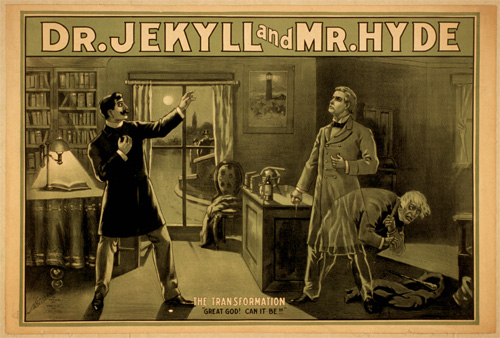
While the origin of the term isn’t clear, there are example of the genre longer than there was a specific subgenre. An example of early urban fantasy would be Strange Case of Dr Jekyll and Mr Hyde. This story depicts a normal man taking on a fantastical change, something that is clearly not normal. More recently authors that have had a major impact on catapulting urban fantasy into an actual subgenre include Laurell K. Hamilton, Kim Harrison, and Charles de Lint.
Major Themes
Supernatural Creatures are either out in the open and accepted as fact or are hiding in secret. This is a bit of a broad statement, and while not all urban fantasy will deal with supernatural creatures, it is a major theme of the subgenre. Generally when supernatural creatures are involved, they are handled in one of three ways:
- They are out in the open and accepted as fact not only by the main characters, but by everyone. People may not like them, but they are part of our everyday lives.
- They are hiding in plain sight. They’re there, and some people know their existence, some don’t. They are out amongst the population but try to keep a low profile.
- They remain secret and underground. Our main character and other supernaturals may know they exist, but the very vast majority still think them to be fairytales.

Urban fantasy highlights strong female protagonists and, additionally, numerous female authors. Whereas High Fantasy can sometimes seem like the “Good Ol’ Boy” of the Fantasy subgenres, a strong feminine streak rules Urban Fantasy. Protagonists are often strong female characters who are educated, working, and independent adults. They are women who can kick your butt just as soon as look at you, are resourceful, and are a refreshing face in the fantasy genre. While this is not always the case (see: Twilight), it is an upward trend within the genre, and one I hope to see more of.
When adult characters are the main focus of an urban fantasy they tend to be professionals, using skills for good, fighting evil — whether it is right out in the open or in dark alleyways where most of the population won’t look. They either have supernatural skills (or artifacts, spells, etc.) or are supernatural creatures themselves and use this advantage to fight whatever is out there causing trouble in their neighborhoods or in the world at large.
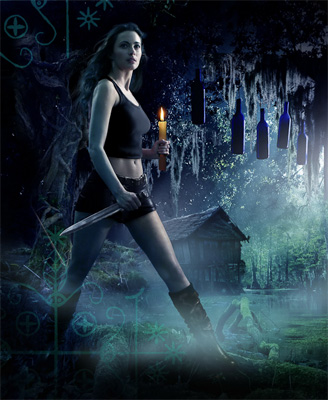
Factions are another big theme. The lines of good and evil aren’t nearly as defined in Urban Fantasy as they are in the more traditional High Fantasy. A character can be an anti-hero and could belong to either a faction that believes in preserving supernaturals at all cost or a faction that wants to preserve human life. The motives may be understandable and sympathetic, but are neither inherently good nor evil. Characters can switch factions based on a change in ideology or are cemented in when factions are drawn amongst species lines.
For example, if you have vampires, humans, and werewolves in a story, at any given time they could all be enemies or work together depending on individual motivation. If werewolves were encroaching on the vamp/human territory they could put differences aside to fight together only to be enemies again when the fight was over. The lines of good and evil here are ambiguous at best, which can lead to more complicated and compelling storylines.
When children, teens, or young adults are the focus of an urban fantasy they are generally discovering magic in the world. Rather than accepting the supernatural as fact, they are confronted with it and must learn about a whole new world. Where adult protagonist stories may involve more action and violence, a child-centered story is more likely to place smarts over brawn. Lines of good and evil are going to be much more defined, and factions may exist but they are shades of grey usually clearly on one side or the other.
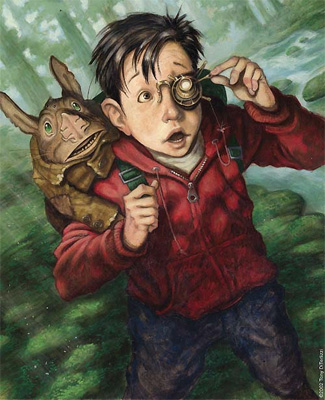
Reading List
- The Stranger: The Labyrinths of Echo, Part One by Max Frei
- Divine Misfortune and Monster by A. Lee. Martinez
- Running With the Demon (The Word and the Void Trilogy, Book 1) by Terry Brooks
- War for the Oaks: A Novel by Emma Bull
- Neverwhere: A Novel and American Gods: A Novel by Neil Gaiman
- Mythology 101 (Questar Fantasy) by Jody Lynn Nye
- Guilty Pleasures (Anita Blake, Vampire Hunter) (and the rest of the series) by Laurell K. Hamilton
- Once Bitten, Twice Shy (Jaz Parks), The Jaz Parks series by Jennifer Rardin
- Dreams Underfoot: A Newford Collection (Newford series) by Charles de Lint
- The Becoming (The Anna Strong Chronicles, Book 1) by Jeanne C. Stein
Resources
- Buker, Derek M. Science Fiction and Fantasy Readers’ Advisory: The Librarian’s Guide to Cyborgs, Aliens, and Sorcerers (Ala Readers Advisory Series). American Library Association, 2002. 158-161.
- D’Ammassa, Don. Encyclopedia of adventure fiction. Facts on File, 2009. 58.
- Westfahl, Gary. The Greenwood Encyclopedia of Science Fiction and Fantasy: Themes, Works, and Wonders (3 Volumes). Westport, Connecticut: Greenwood Press, 2005.




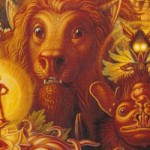
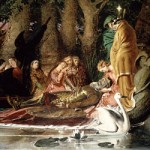

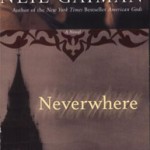
There’s been a turn in recent years in some of the series – like LKH’s Anita Blake series. I wouldn’t consider it Urban Fantasy anymore, it’s more a Paranormal Romance, those books are more about the sex as the series progresses – the “plots” of which are thin to nonexistent and serve only as waypoints to the different partners she has.
I heard a few authors speak at DragonCon a few years ago about the difference between Urban Fantasy and Paranormal Romance — as they seem so similar in theme and indeed hit a lot of the same points you made. Their clarification seemed to be that if the focus of the book was more about the story, conflict and character it fit into the Urban Fantasy category, and if the focus was more on the characters and their relationships (especially if featuring a lot of sex) then it fits with the Paranormal Romance designation.
Of course, at my local bookstores, LKH is generally shelved in Horror, which is pretty ridiculous all things considered. Unless it’s the sex in the books at which we’re supposed to be so horrified.
Being shelved in horror shows a distinct lack of understanding by either the bookseller or the publisher… not sure which. You raise a good point though, context is more important than content. Paranormal Romance, Urban Fantasy and Horror could all have vampires, werewolves or other traditional horror tropes, but could be HUGELY different stories. Just because you’re a fan of PR doesn’t mean you’re a fan of horror. It really is interesting to see how genres evolve and change.
I’m trying to decide if I should do a Paranormal Romance Defining the Genre or if I missed the boat and should have attached it here… There are distinct differences, what do you think?
My small opinion – I think you could do a DtG for Paranormal Romance. I think there are enough differences that it could stand on its own instead of being grouped together with Urban Fantasy.
Bringing up the use of strong female characters here, what do you think is the reason this genre moreso than others lends itself so well to the use of them? Do you think it has to do with the large number of female writers in the genre?
I think you have at least one of the two MAIN reasons why I believe strong female characters are so prominent in Urban Fantasy. First, as you mentioned there are a larger number of female authors within the subgenre. I think the reason there are some many more ladies in this field is because it lends itself more towards gender equality than high fantasy does.
I’m not trying to be sexist here, high fantasy is a much more masculine intensive subgenre and I believe that’s because it is usually set in a “Medieval Earth” type environment, not just tech but usually gender stereotypes and roles. Men are the heroes and the damsels are in distress. (This is not ALWAYS the case, but is the predominant trend). In a much more gender neutral world we are evolving into its an escape for a man to reclaim his masculinity to put himself in the shoes of the hero and save the day.
Urban Fantasy however is usually a much more contemporary setting. Women are equal, have a voice and don’t need to be rescued. We can vote, kick ass and take care of ourselves. While this is empowering to most women, in a traditional sense it takes the man out of the protector/hero role. I think it is a setting women are more comfortable writing in. I for one would have a difficult time envisioning a story where the main female character was basically chattel (even if she was abnormally strong willed a trope in high fantasy as well).
If I had to guess why there were more strong female characters in urban fantasy, it would be that reason above all others. It is an attractive landscape for today’s women to write in. It isn’t constrained by predetermined and arcane gender roles and expectations.
I’ve been surfing on-line more than three hours nowadays, yet I never found any attention-grabbing article like yours. It is beautiful worth sufficient for me. In my view, if all web owners and bloggers made excellent content as you did, the net will likely be much more useful than ever before.